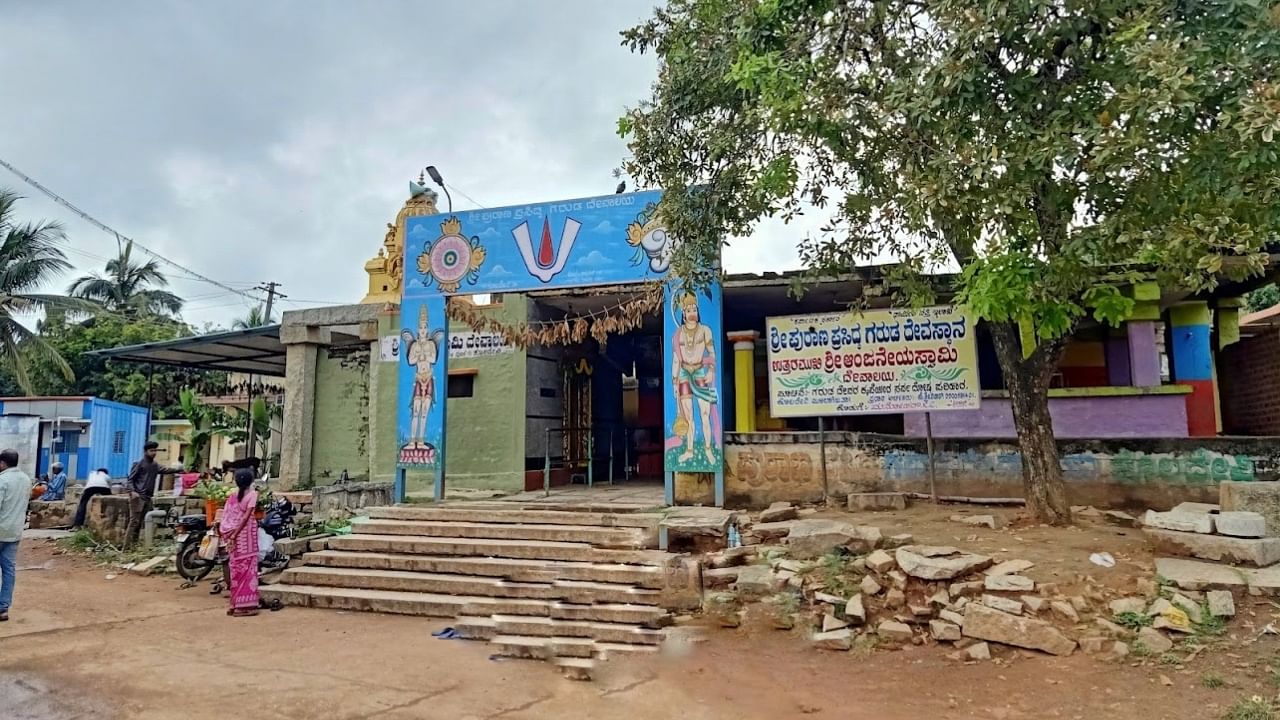

There are times in life when you just need to escape the chaos of the city and treat your mind, body, and soul to some calmness. But with hectic work schedules, it’s best to travel somewhere nearby the city, sit in an old temple, inhale the fresh air, and indulge in some historic rituals. The feeling is beyond compare.
For such a soulful trip, drive down the Bengaluru-Tirupati Highway to experience the most amazing and rejuvenating historical temples. From the Garuda temple at Koladevi to Someshwara temple, Ganesha temple at Kurudumale to the Moola Brindavan of Sri Padharaja Mutt at Mulbagilu, the trip will sure help to calm and restore your soul.
Garuda Temple:
104 km away from Silicon Valley, the two-hour drive from Bengaluru to the rare Garuda temple at Koladevi, is a soulful experience. Set amidst green fields and hutments, Koladevi is a small hamlet which houses the almost 1000 years old Garuda temple that came to the limelight in the last few decades. The uniqueness here is that Garuda (the vehicle) of Lord Vishnu is the principal deity, is kneeling on one leg and is carrying Lord Vishnu on his right hand and Goddess Mahalakshmi on his left hand. The sandstone Garuda idol is 5.5 feet tall, and also has 8 serpents adorned on his body. It is believed that if devotees get abhisheka done for the deity, they will be relieved of sarpa doshas. The idol was installed by Ramanujacharya, and the temple is associated with Tretha Yuga and Dwapara Yuga. There’s also a Hanuman shrine found left of the altar. The uniqueness of this temple is Lord Vishnu and Garuda are facing Hanuman and Hanuman is also facing them, its Goddess Lakshmi who’s facing the people and blessing the devotees.
Ganesha Temple, Kurudumale:
Home to one of the biggest idols, the Kurudumale Ganesha temple has a massive 13.5-foot saligrama Ganesha idol. Legend has it that the idol was entrenched in Sata Yuga by the trimurthis: Brahma, Vishnu and Maheshwara (Shiva). Devotees start their new jobs and new activities only after taking the blessings of Lord Ganesha. As the Hindu trinity installed this idol, the place came to be known as Kotadri and the hills in which it is located is known as “Koodu-Male”, however, over the years, it’s become Kurudumale. The amusing fact about this temple is, that it is built of a single rock without any foundation and is also believed that the idol is continuously growing.
Someshwara Temple, Kurudumale:
A few meters away from the Ganesha temple, is the Someshwara temple that’s dedicated to Lord Shiva, and is an exemplar of architectural proficiency in Karnataka. The temple is believed to be built by Raja Raja Chola and is known for its meticulous carvings and sculptures. The main sculpturist of this temple was ‘Jakanachari’ who carried out the first half of temple carvings and the latter half was constructed by his son ‘Dankanachari’. The alluring aspect of this temple is the rare craftsmanship of how it has been entirely carved out of rocks and does not have a foundation. Another interesting fact about the temple is the sunray falling in front of the Someshwar.
Sri Padaraja Mutt:
Mulbagilu, popularly known as the second capital of the Vijayanagar empire of the 16th century is home to the renowned Sri Padaraja Mutt. Coming from the Madvacharya’s Parampara (lineage), Sri Padarayaru was a great saint, and philosopher and was actively propagating and preaching the Dvaita philosophy founded by Madvacharya. One can also see the cave where Sri Vyasa Rayaru (his disciple) learnt his lessons of Dvaita philosophy. Legend says that the divine river Ganges came down to mix with the waters of Narasimha Theertha (the pond inside the premises), when Sri Padarayaru desired to perform Ganga Snana (bath in river Ganges) but couldn’t travel due to his old age. Since then, devotees believe, that a dip in the Narasimha Theertham is equivalent to Ganga Snana.
(Deepa Shri Rajan is a food, travel and lifestyle blogger and Instagrammer based out of Bengaluru)